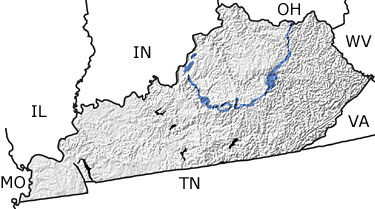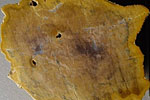Paleontology and geologyWarm tropical seas covered Kentucky during much of the Devonian and marine fossils are very diverse. These include brachiopods, bryozoans, crinoids, and trilobites. Tabulate and rugose corals are especially abundant in the Middle Devonian deposits that form the Falls of the Ohio State Park in Louisville. By the Late Devonian, a restricted water flow caused oxygen to be severely depleted near the seafloor. Few organisms could live in these conditions. The lack of oxygen prevented the decay of plant and animal remains, and organic-rich shales were deposited on the seafloor. Logs sometimes floated in from the north and their fossils are found in these shales. Armored fish swam in the surface waters, which still contained sufficient oxygen to support marine life. |


